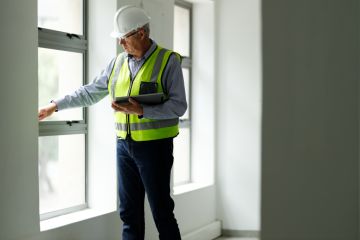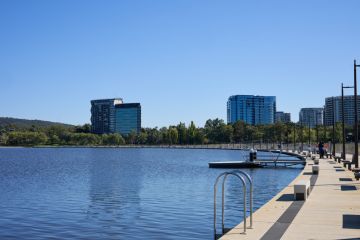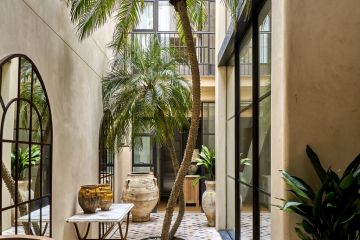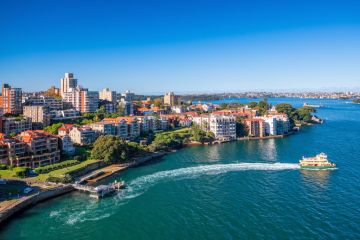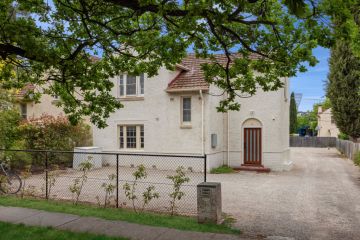Forgotten But Not Gone: Australia’s Creepiest Abandoned Buildings
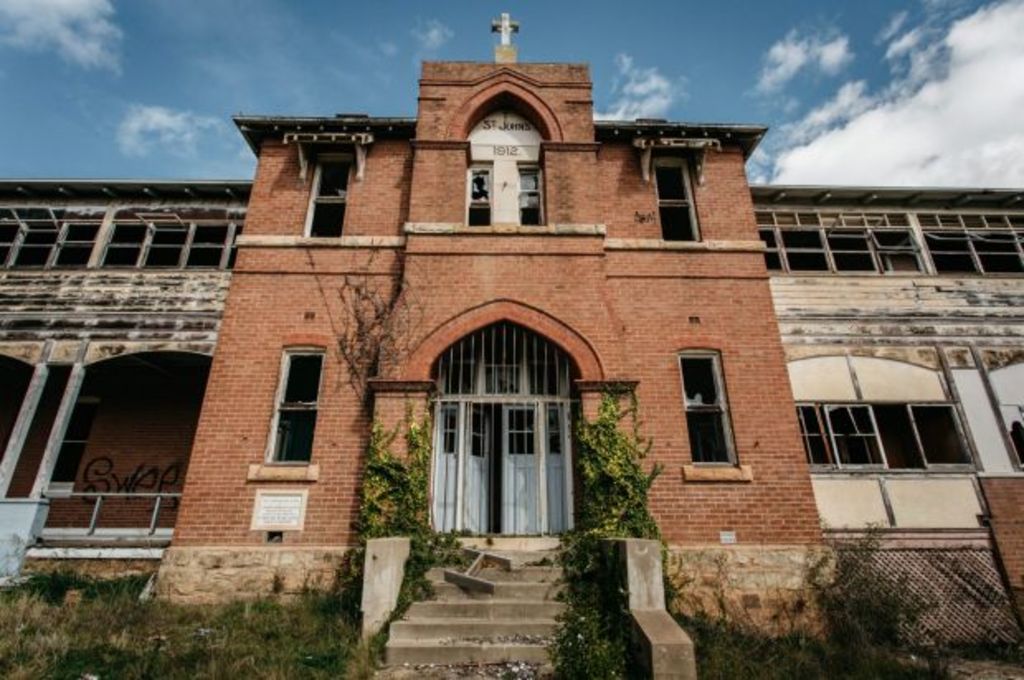
A once thriving theatre filled with lights and music is now silent and dark, its velvet curtain rotting and the ornate ceiling covered in filth.
A department store where thousands of shoppers came to browse is now empty but for a few broken mannequins and motionless escalators.
Hundreds of prison cells plastered with posters, letters and graffiti seem lived in, yet the inmates are long gone and the building devoid of human life.
Whether or not you believe in ghosts, Australia’s abandoned buildings are fascinating; their history, the people that lived and worked within them and the secrets that remain forever hidden in the walls.
Here are nine of Australia’s creepiest abandoned buildings, all once thriving and important structures they are now frozen in the past, waiting to be claimed by nature or redeveloped and given new life.
1. St John’s Orphanage
St John’s Orphanage was run by The Sisters of Mercy from 1912-1978 with over 2500 boys, some as young as three years old, calling it home.
 These photos were taken prior to a devastating fire in November 2016. Photo: Tim Frawley
These photos were taken prior to a devastating fire in November 2016. Photo: Tim Frawley
According to the St John’s official website, only 4 per cent of the boys were actually orphaned, most of them were given up by their families who were too poor or troubled to care for them.
After the orphanage closed its doors in 1978, the building became a Youth With A Mission base for Christians from all over the world. It closed again in the late 1990s and has been empty ever since.
 Only 4 per cent of the boys were actually orphaned, most of them were given up by their families. Photo: Tim Frawley
Only 4 per cent of the boys were actually orphaned, most of them were given up by their families. Photo: Tim Frawley
These photos were taken prior to a devastating fire in November 2016 which caused a great deal of damage to the interior.
St John’s imposing shell still stands, however, and is reportedly haunted by unhappy boys from the orphanage’s past.
2. The Tooth & Co Malthouse
Brewers Tooth & Co. Ltd produced a number of popular beers in 20th century Australia and owned the Maltings estate from 1905-1981.
 Brewers Tooth & Co. Ltd owned the Maltings estate from 1905-1981. Photo: Brett Patman
Brewers Tooth & Co. Ltd owned the Maltings estate from 1905-1981. Photo: Brett Patman
They added two malthouses and a manager’s cottage to the site between 1906 and 1916, but the buildings were beset with troubles due to extensive damage from wild weather and fire.
Malthouse one was closed for good in 1969 and malthouses two and three in 1980, and the buildings have stood empty ever since.
 The buildings have stood empty since 1980. Photo: Brett Patman
The buildings have stood empty since 1980. Photo: Brett Patman
While the Maltings has been vandalised and the buildings dilapidated throughout, the striking facade and scale of the structures still offer insight into Australia’s beer brewing history.
There has been talk of redeveloping the site into a luxury hotel, but nothing has materialised just yet.
3. Nursing Home and Former Sanatorium
This abandoned retirement home was once a sanatorium for patients suffering with tuberculosis.
 The Nursing Home and Former Sanatorium originally opened in 1909. Photo: Tim Frawley
The Nursing Home and Former Sanatorium originally opened in 1909. Photo: Tim Frawley
Built at 1000 feet above sea level, the rural location was purposely chosen to help patients recover away from polluted city streets.
Originally opened in 1909, treatment for tuberculosis advanced so much that by 1958 there were not enough patients to fill the wards.
 The abandoned retirement home was once a sanatorium for patients suffering with tuberculosis. Photo: Tim Frawley
The abandoned retirement home was once a sanatorium for patients suffering with tuberculosis. Photo: Tim Frawley
It transitioned into a hospital for patients with chronic diseases and by 1993 it was a centre for aged care.
A purpose-built facility for the elderly, specialising in dementia care, was opened next door in the early 2000s, and the old sanatorium has been abandoned and unused since then.
4. David Jones Department Store
 The David Jones department store was originally opened as Scotts in the 1890s. Photo: Renew Newcastle
The David Jones department store was originally opened as Scotts in the 1890s. Photo: Renew Newcastle
Originally opened as Scotts in the 1890s, David Jones took over the grand corner building and thriving department store in 1957, eventually closing its doors to the last customers in 2011.
Thanks to Renew Newcastle, a portion of the ground floor reopened in 2012 as The Emporium, an arcade of boutique artisans and art exhibitions.
 The building is currently empty in anticipation of being redeveloped. Photo: Jonathon Davies
The building is currently empty in anticipation of being redeveloped. Photo: Jonathon Davies
The Emporium closed in mid 2017 and the building is about to be redeveloped as part of a huge revitalisation project that will include apartments, dining options and retail spaces.
5. The Victoria Theatre
Built between 1890 and 1891, this heritage-listed theatre is renowned for being one of the best and most technologically advanced theatres of the age, with professional acts travelling from all over Australia to perform to crowds of up to 1700 people.
The Victoria was bought by Hoyts in 1942 and converted into both a cinema and live performance venue before ending its run as a theatre entirely in 1966.
 Professional acts travelling from all over Australia would perform to crowds of up to 1700 people. Photo: Peter Bower
Professional acts travelling from all over Australia would perform to crowds of up to 1700 people. Photo: Peter Bower
It operated as a retail space for close to 30 years until permanently closing to the public in the late 1990s.
Purchased in 2015 by a well-known theatre operator, there is still hope that the decaying Victoria Theatre will be returned to its former magnificence as a lively entertainment venue sometime soon.
6. Terminus Hotel
It is hard to believe that this beautiful pub, originally opened in 1865 as The Coopers Arms, has stood empty and covered in ivy for over 30 years.
In 1911, it was purchased by the Tooth & Co brewery and operated as The Terminus Hotel until it was privately sold in 1984.
 The Terminus Hotel has stood empty and covered in ivy for over 30 years. Photo: Brett Patman
The Terminus Hotel has stood empty and covered in ivy for over 30 years. Photo: Brett Patman
This heritage-listed building has remained boarded up and stuck in an early 1980s time warp since then, only ever seen or used by vandals and squatters.
The hotel was sold in 2016 and is currently undergoing renovations by its new owners to hopefully reopen later this year.
7. Peters Ice Cream Factory
Most Aussies will have memories of enjoying a Peters’ ice cream on summer beach trips or at family barbecues.
 The external facade of the boiler house. Photo: Brett Patman
The external facade of the boiler house. Photo: Brett Patman
The iconic brand was started in 1907 by Fred Peters in an old shed in his backyard but soon expanded to meet the demands of Australia’s ice cream loving population.
This factory was opened in 1939, initially to produce condensed milk, but soon increased operations to manufacture a range of milk-based products including ice cream, milk powder and yoghurt.
 The laboratory was where bacteria testing, standardising and compositional testing of products would be carried out. Photo: Brett Patman
The laboratory was where bacteria testing, standardising and compositional testing of products would be carried out. Photo: Brett Patman
The photos show the scale of the operation including the large vats for storage, the boiler room, a laboratory for quality control purposes and even an amenity building for staff, which in its heyday, had a swimming pool.
Production ceased in the 1990s as the operation was moved to a modern facility and sadly the factory fell into disrepair.
8. Wangi Power Station
Once the largest power supplier in New South Wales, this power station was decommissioned in 1986 after only 30 years in operation and has been decaying ever since.
 The power station was decommissioned in 1986. Photo: Tim Frawley
The power station was decommissioned in 1986. Photo: Tim Frawley
Consisting of two large stations “A” and “B”, the huge building and its vast grounds also include administrative and staff areas.
There have been proposals for redevelopment over the years but the enormous scale of the project, requiring millions of dollars of investment, has meant that nothing has come to fruition.
9. Parramatta Gaol
With its violent history of executions, murders and housing some of Australia’s most notorious criminals, it’s no wonder the empty jail is an extremely eerie place.
In operation on this site since 1798, the last all-male prisoners were transferred out of the imposing sandstone structure in 2011.
 The Parramatta Gaol has stood empty since the last prisoners were transferred out in 2011. Photo: Tim Frawley
The Parramatta Gaol has stood empty since the last prisoners were transferred out in 2011. Photo: Tim Frawley
Most of the jail remains largely untouched since the day it closed, with prisoners’ personal items such as clothing, books, letters and posters still covering the cell floors and walls.
The photos of the huge prison chapel with its stained-glass windows and polished wooden pews are particularly striking against the rest of the grimy grey steel and concrete interior.
 With its violent history of executions, the empty jail is an extremely eerie place. Photo: Tim Frawley
With its violent history of executions, the empty jail is an extremely eerie place. Photo: Tim Frawley
The building remains abandoned but ownership has been transferred to the Deerubbin Local Aboriginal Land Council after a successful land claim.
With thanks to Brett Patman, Tim Frawley, Peter Bower, Jonathon Davies, Renew Newcastle, ABC Newcastle and Leesa Putan.
- Related: Uncovering the secret histories of our homes
- Related: The family who live and work at an old gaol
- Related: Is this Australia’s most haunted town?
We recommend
States
Capital Cities
Capital Cities - Rentals
Popular Areas
Allhomes
More
- © 2025, CoStar Group Inc.

